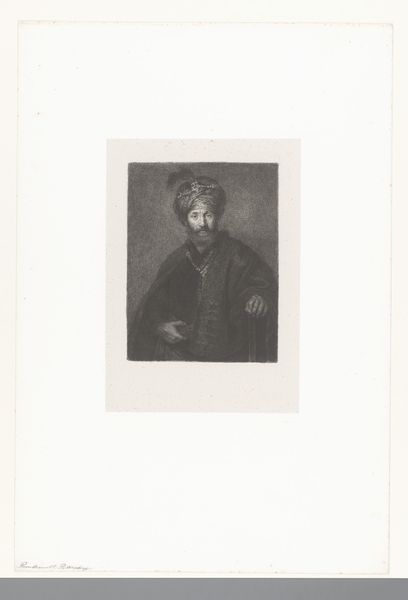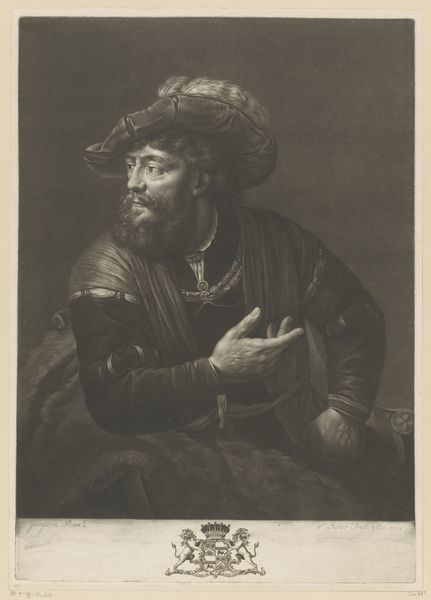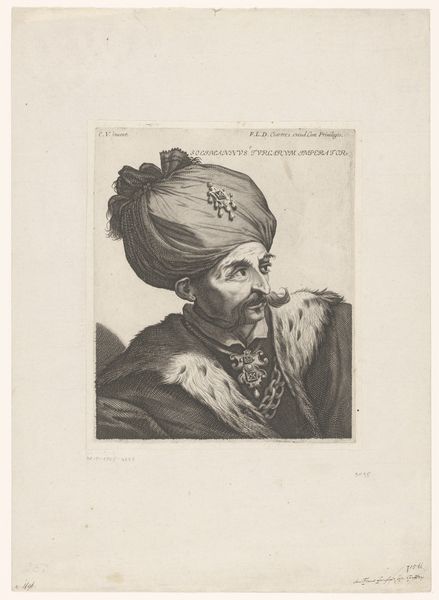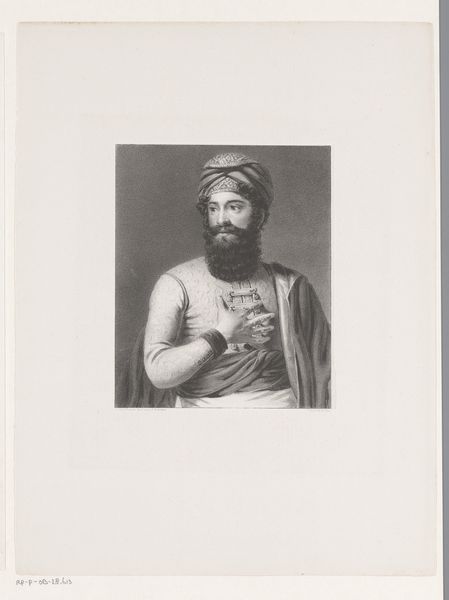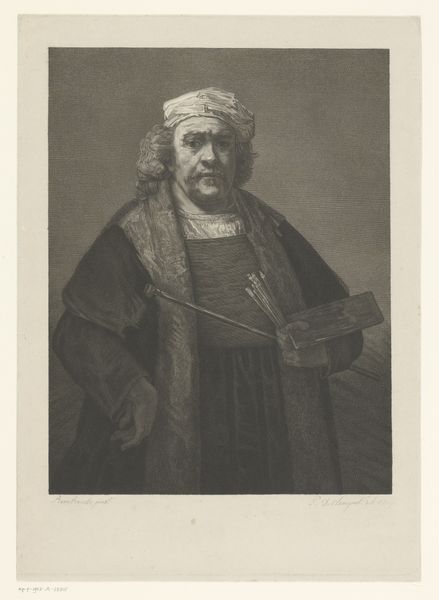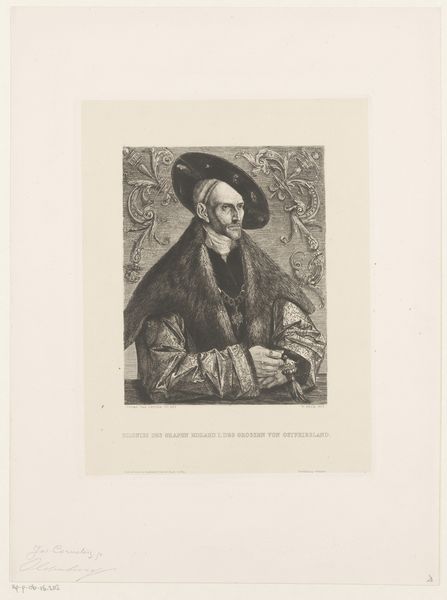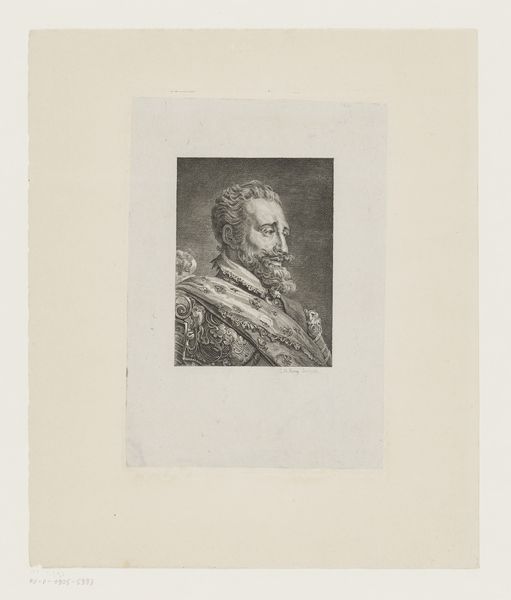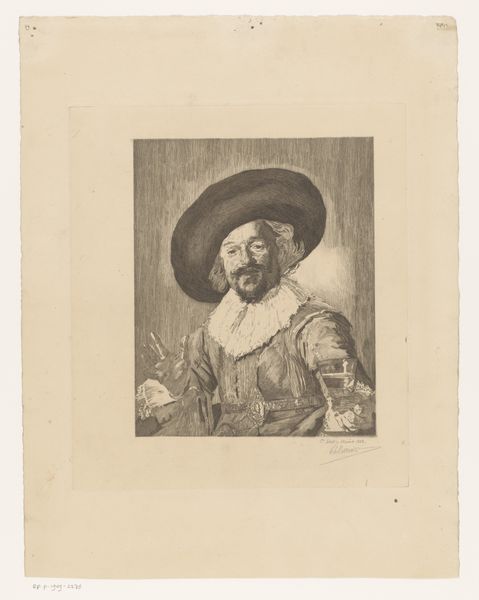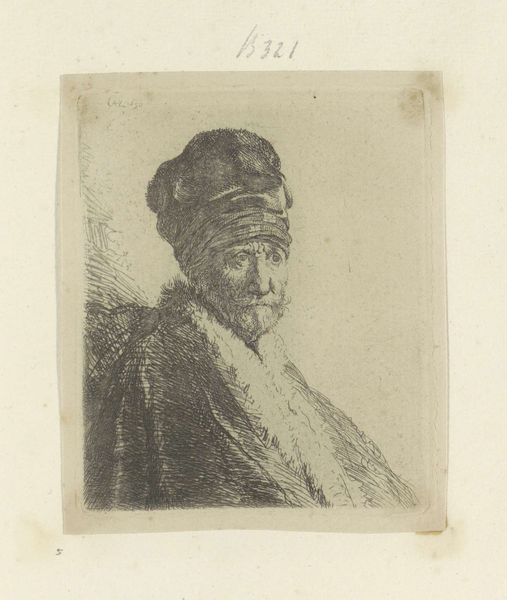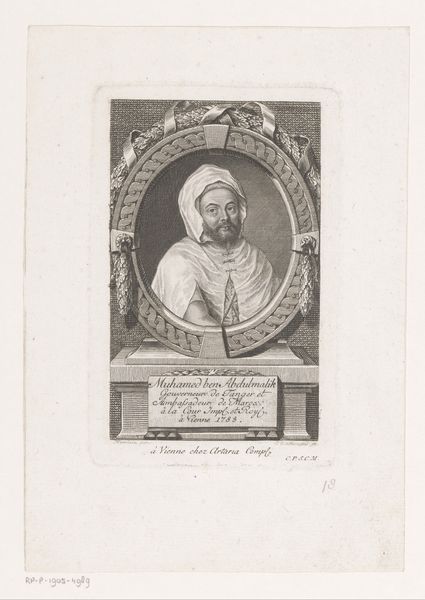
drawing, print, graphite, engraving
#
portrait
#
drawing
# print
#
romanticism
#
orientalism
#
graphite
#
islamic-art
#
history-painting
#
engraving
Dimensions: height 279 mm, width 214 mm
Copyright: Rijks Museum: Open Domain
Curator: Let’s take a moment to consider this compelling portrait. Here we see a graphite drawing, and subsequent engraving, of Mirza Abolhassan Khan Ilchi by John Lucas, dating back to 1835. It's currently held in the Rijksmuseum. Editor: It immediately strikes me as… melancholic. The soft, grey tones evoke a sense of contemplation. Is this typical for portraits of this era? Curator: In many ways. It fits into the Romantic tradition, especially its fascination with faraway lands and cultures. There’s a clear influence of Orientalism at play here. Note the emphasis on his garments, the intricate designs. The very texture almost transports us. It suggests power and otherness, viewed through a Western lens. Editor: The symbolism here feels heavily curated, doesn't it? I'm thinking about representation, and who controls that narrative. This isn't simply a neutral depiction, is it? It has historical baggage in that Western gaze. Curator: Exactly. It prompts us to ask who this man was, not simply what he looked like. He was an incredibly influential figure in Persian politics, serving as ambassador to London and St. Petersburg. But in this image, we mainly perceive the trappings of an exotic diplomat rather than, say, the intellectual capacity of a keen negotiator. Editor: And even the textures we’ve mentioned can be interrogated. How much of the depiction is driven by European fantasy versus any genuine Persian tradition? Curator: An important distinction to make. What lingers with me, though, is the stoicism present in his face. The details— the shape of his beard, his turban, his steady gaze–convey a story of endurance that still echoes across time. It calls attention to how political leaders brand themselves for different constituencies. Editor: This portrait, then, exists at a fascinating intersection. A depiction, shaped by Western Romanticism and Orientalist tendencies, attempting to fix and carry cultural meaning. It serves as a good entrypoint to understanding 19th-century relations between the West and Persia. Curator: Precisely. By acknowledging that gaze, and the history embedded in those symbols, we can get closer to this individual and understand better his impact within history.
Comments
No comments
Be the first to comment and join the conversation on the ultimate creative platform.
